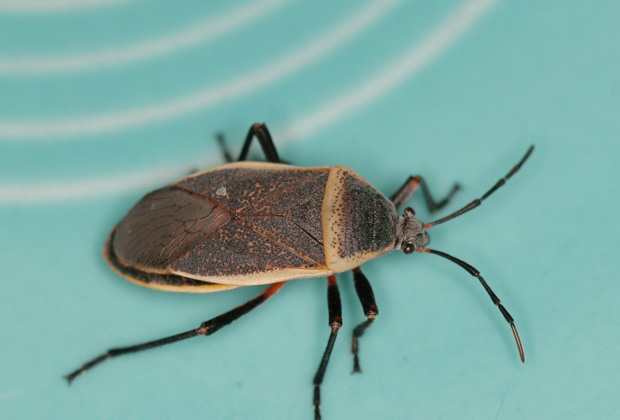Pest Identifier
Boxelder Facts
- 12.5 millimeters in length.
- Dark brown or black with orange colouration.
Boxelders
The boxelder bug is a species of “true bugs” (order Hemiptera) common throughout North America. Their name derives from their primary source of food: the seeds of boxelder trees, though they are known to occasionally consume the seeds of maple and ash trees. Female boxelder trees also provide the insects with their primary breeding ground, as they lay their eggs upon its leaves.
What Are Boxelders?
Small in size, boxelder bugs measure only .5 inches long on average with a width of less than .2 inches. Mature boxelder bugs are mostly black, but can be identified by the three red lines that run across their thorax and the additional thin red lines on their wings.
These insects lay their eggs during the summer months. When first produced, the eggs of the boxelder bug are yellow in color, but eventually become a solid shade of red. This red matches the appearance of the hatched nymphs, or immature boxelder bugs, which are flightless before metamorphosis. Most humans come into contact with these insects during the fall months, when the adult bugs and the nymphs begin seeking shelter for the winter.
Boxelder Infestation
Boxelder bugs can be a nuisance in certain homes, particularly those with boxelder trees in the yard. When the winter months are approaching, these bugs will seek entrance into the home or underneath a building’s siding. As they desire warmth, homes with increased sun exposure are typically more likely to experience a boxelder bug infestation. Once inside, they hibernate until spring, though a home’s heating system can spur the insects to activity sooner than natural.
A boxelder bug is rarely anything more than inconvenient. They do not pose any health concerns and almost never bite humans. They also lay their eggs exclusively outdoors. These pests can, however, stain curtains and other fabrics with their excrement, and they release an unpleasant odor into the air when crushed or threatened.
How to Get Rid of Boxelders
The removal of nearby female boxelder trees is one of the most common solutions for repeat boxelder bug infestations. If you choose to pursue this path, be sure to also remove any seeds from the tree that may have fallen onto the yard. This method is not guaranteed to fix the problem, as these bugs are known to travel as far as a mile in search of food and shelter, but it can help lessen the likelihood of infestation.
Insecticides are generally not recommended in the treatment of boxelder bug infestations, as these insects do not maintain their colonies inside the home. Instead, individual boxelder bugs can be either vacuumed up or killed with a detergent-based spray. Exclusionary measures–including the sealing of cracks and crevices, especially around windows, with either caulk, spray foam or copper mesh–are also strongly recommended.
Boxelder Bites & Treatment
Boxelder bugs are nuisance pests. They do not sting or transmit any diseases and rarely ever bite.
